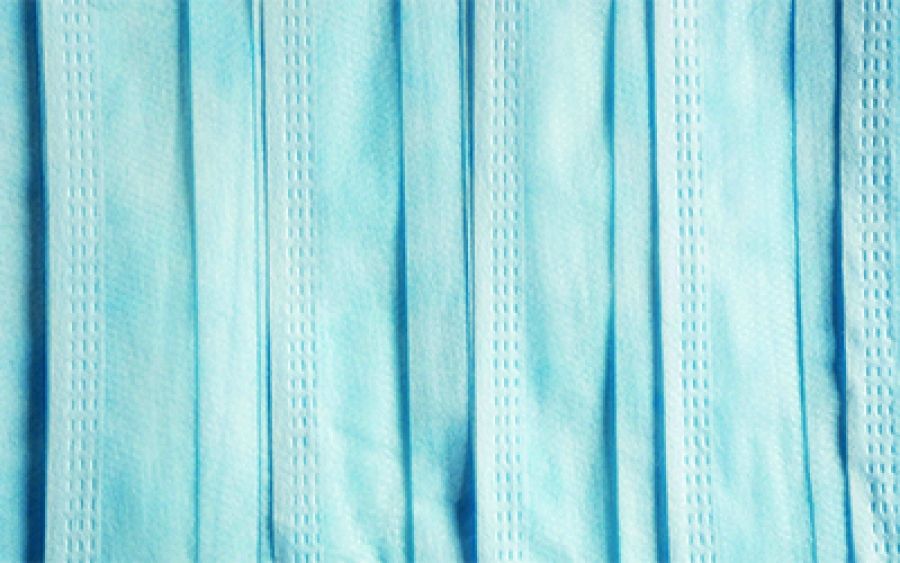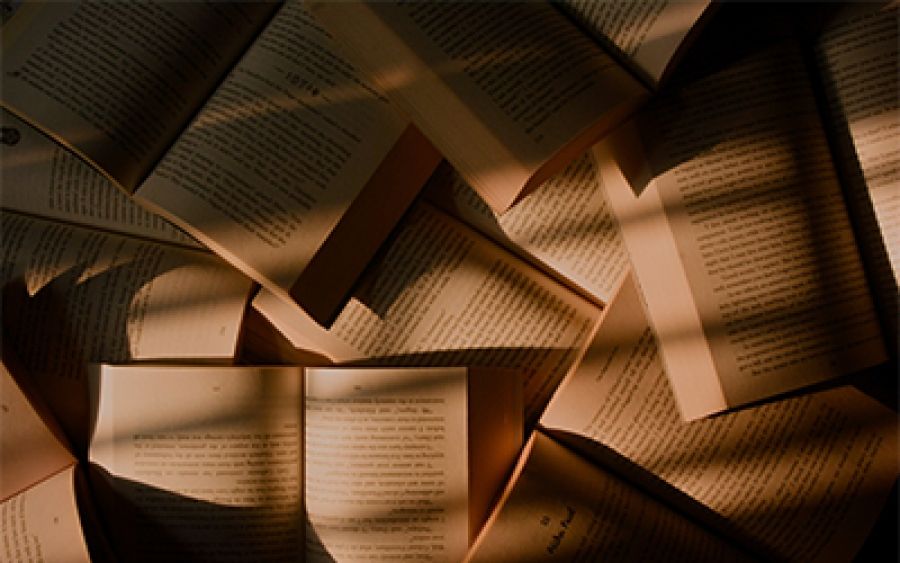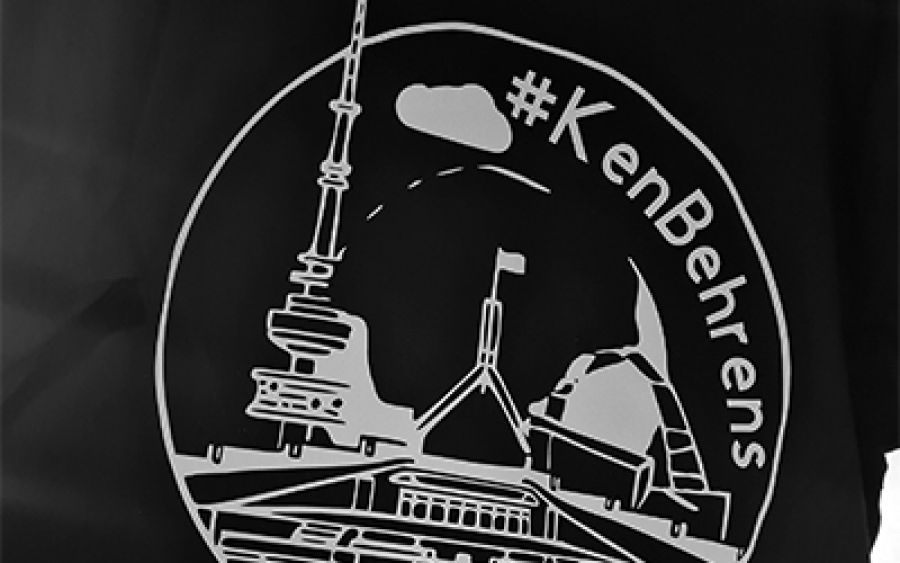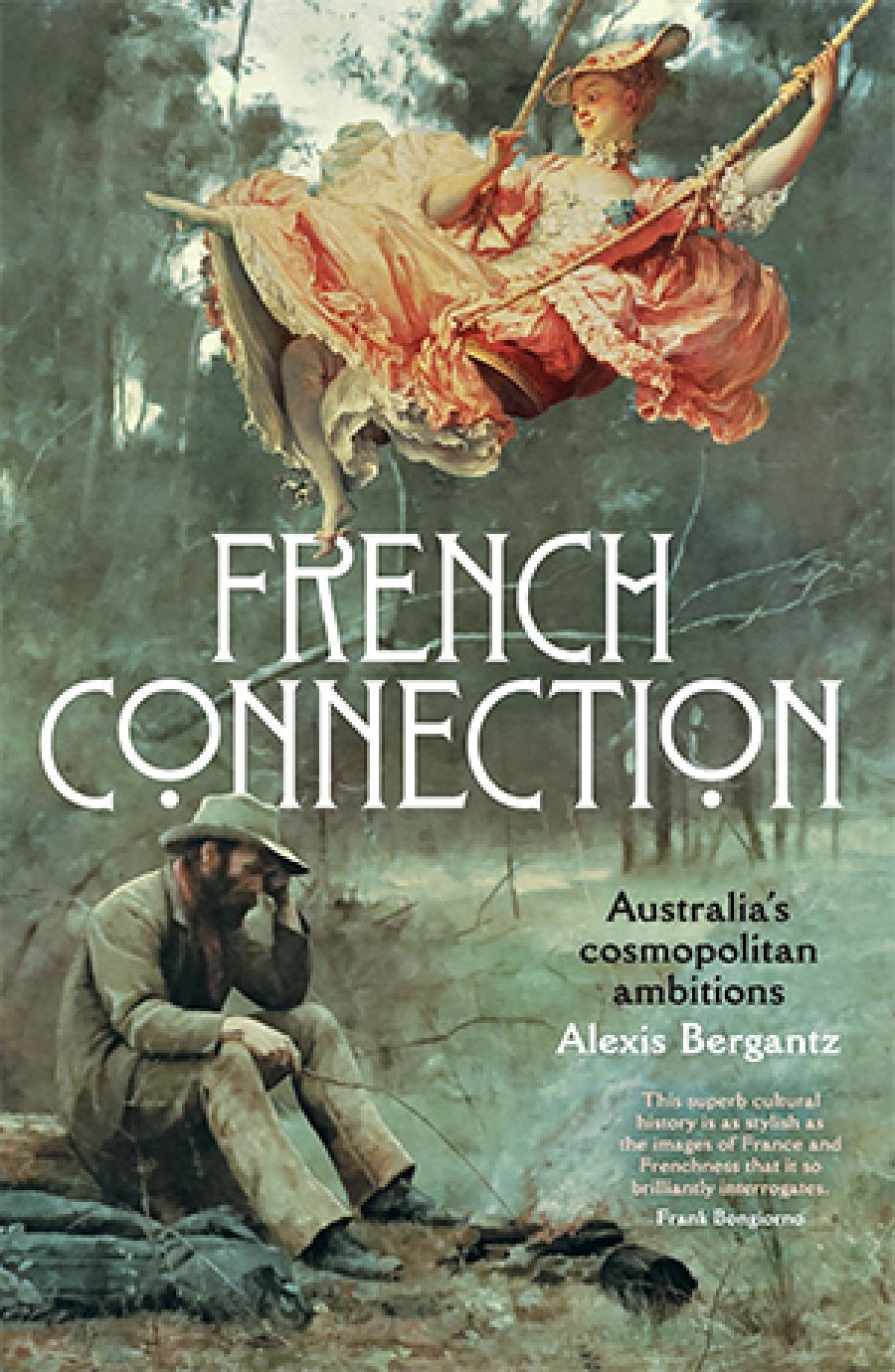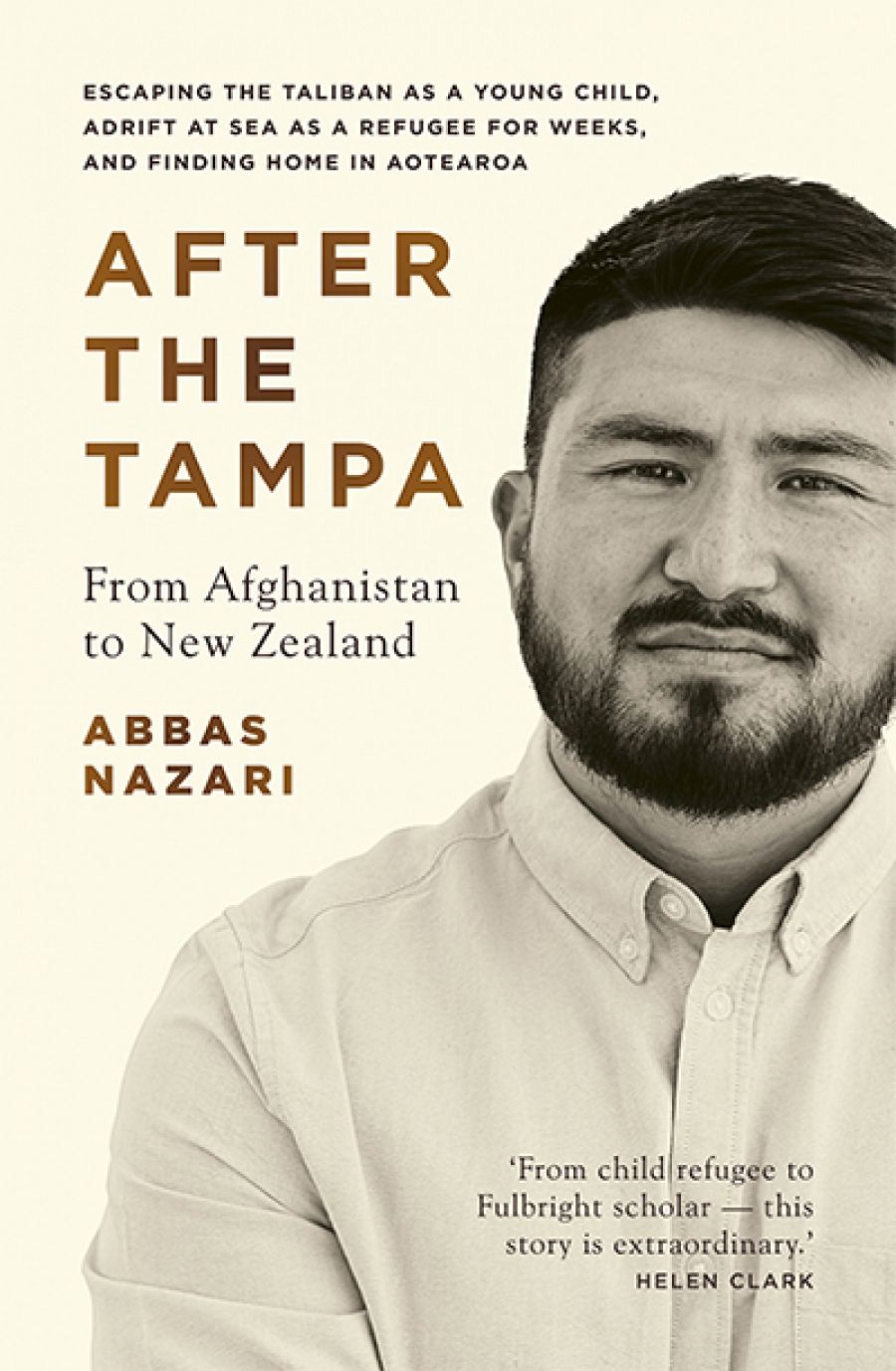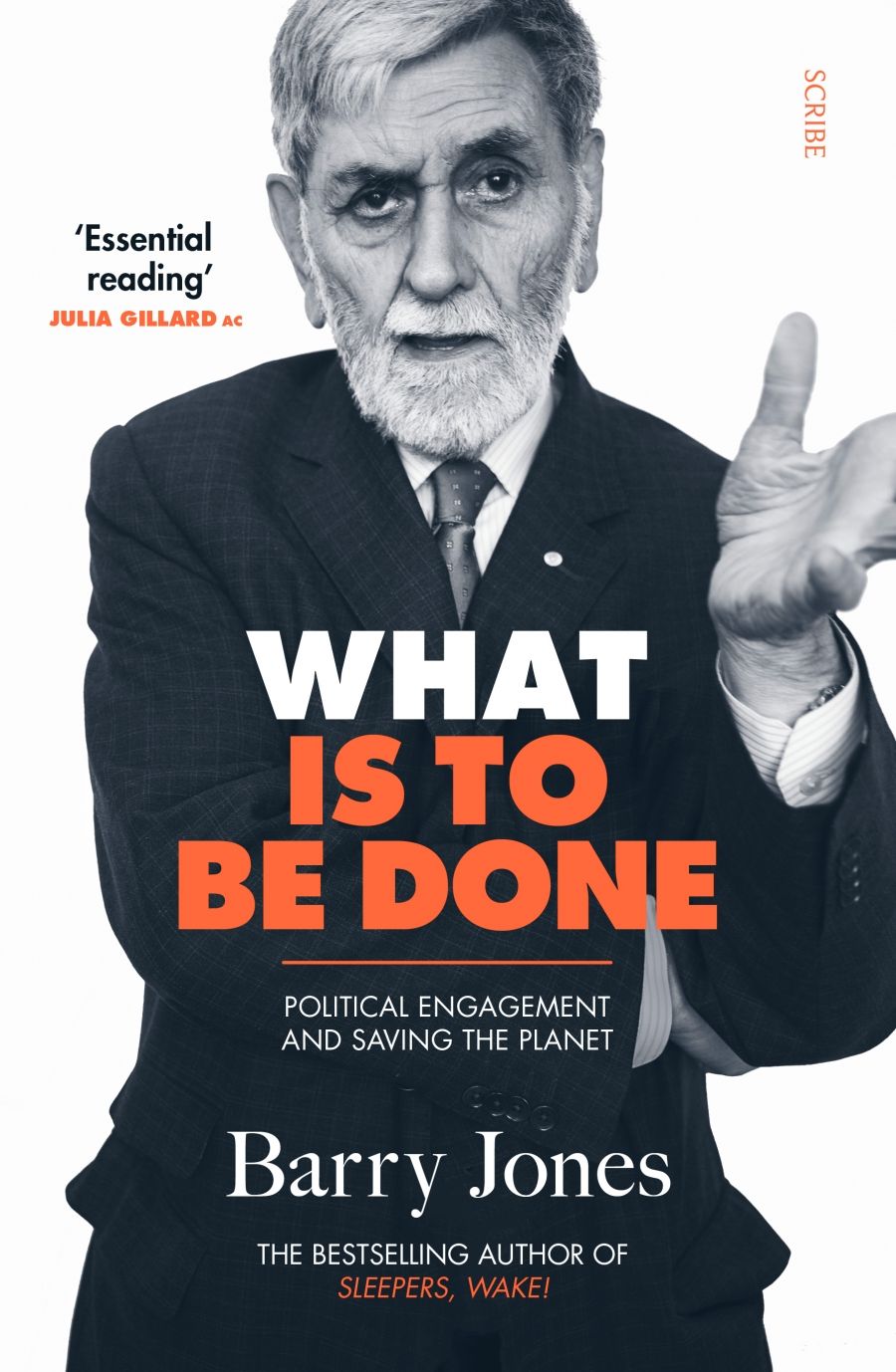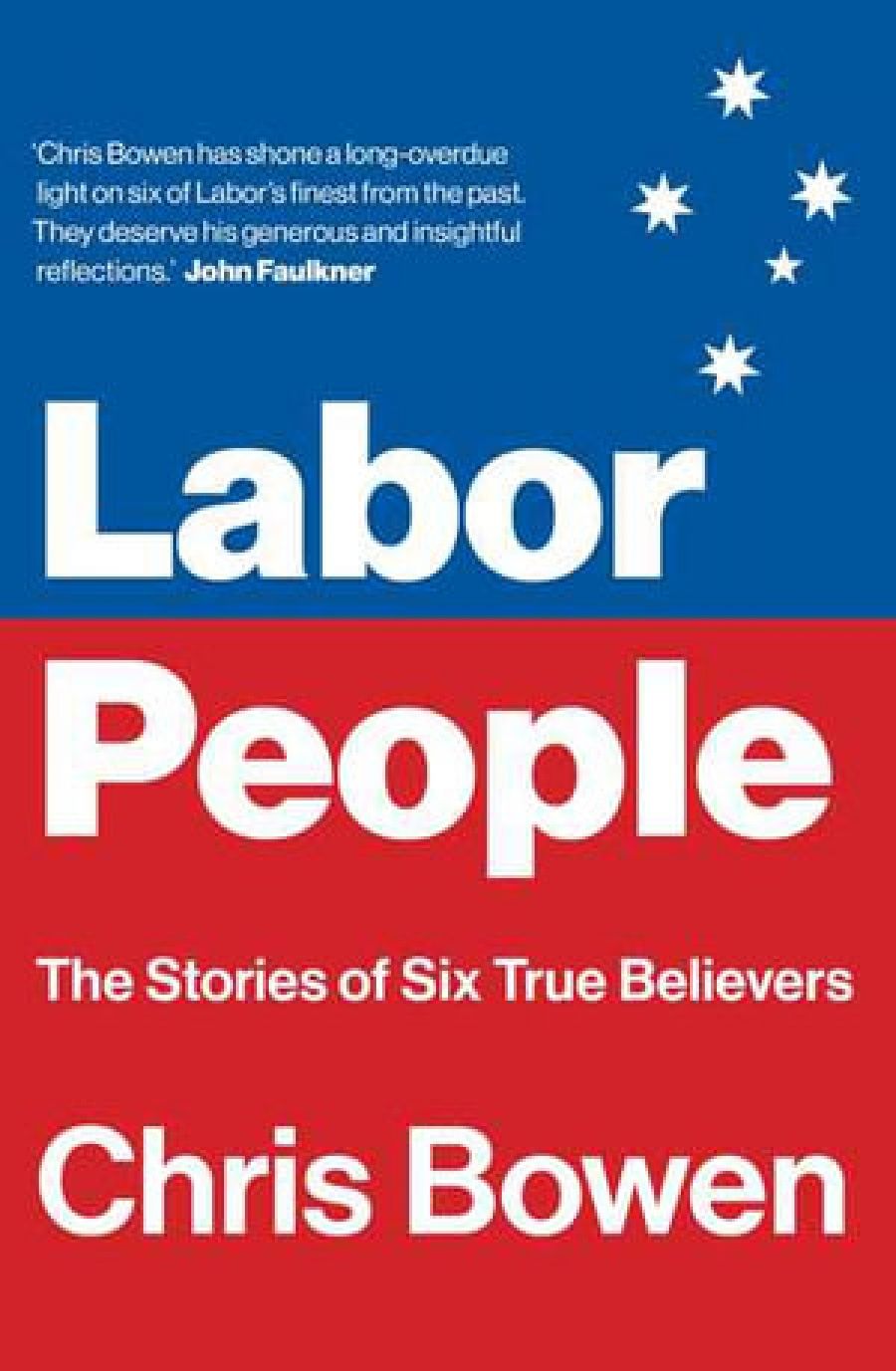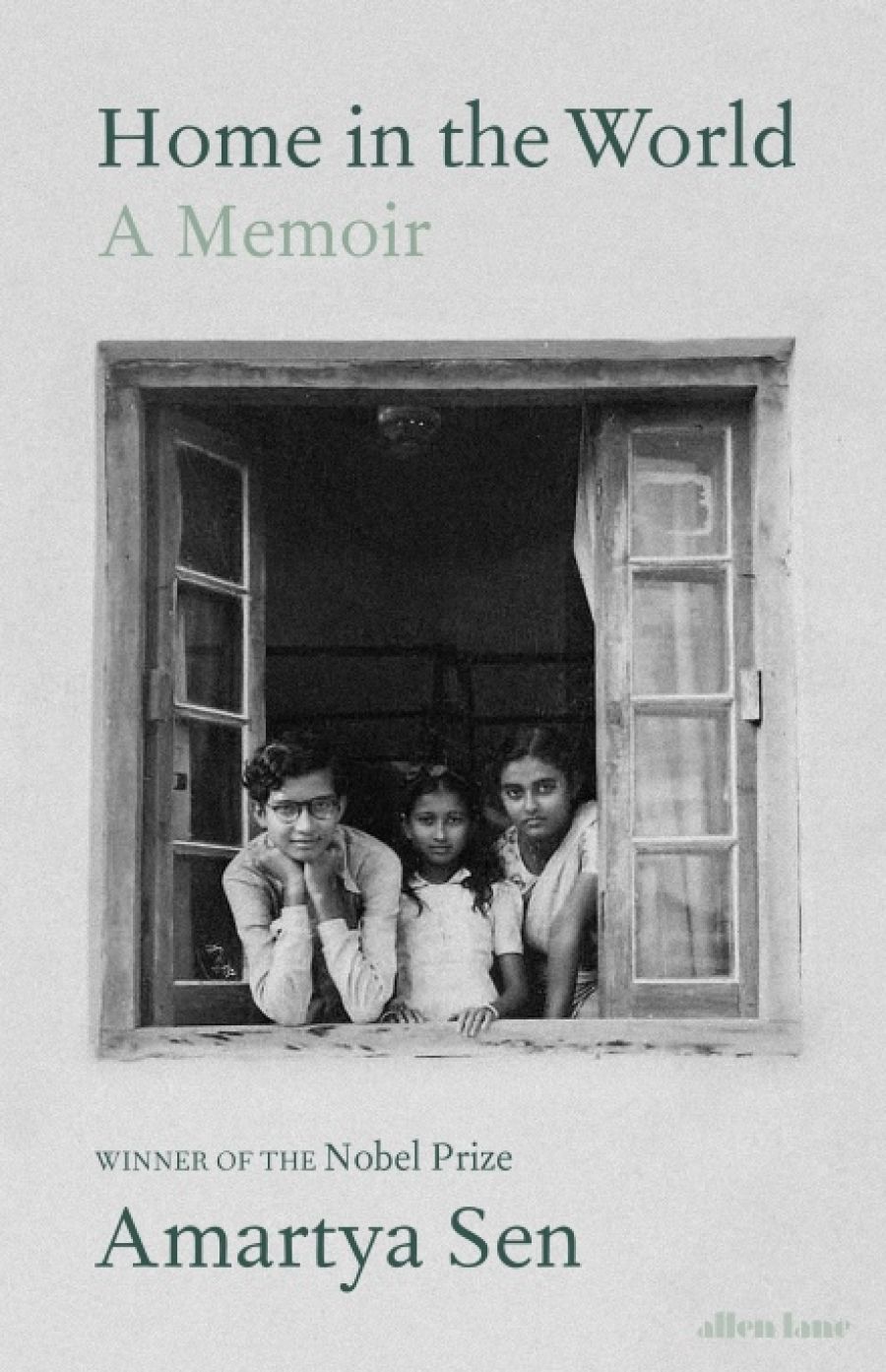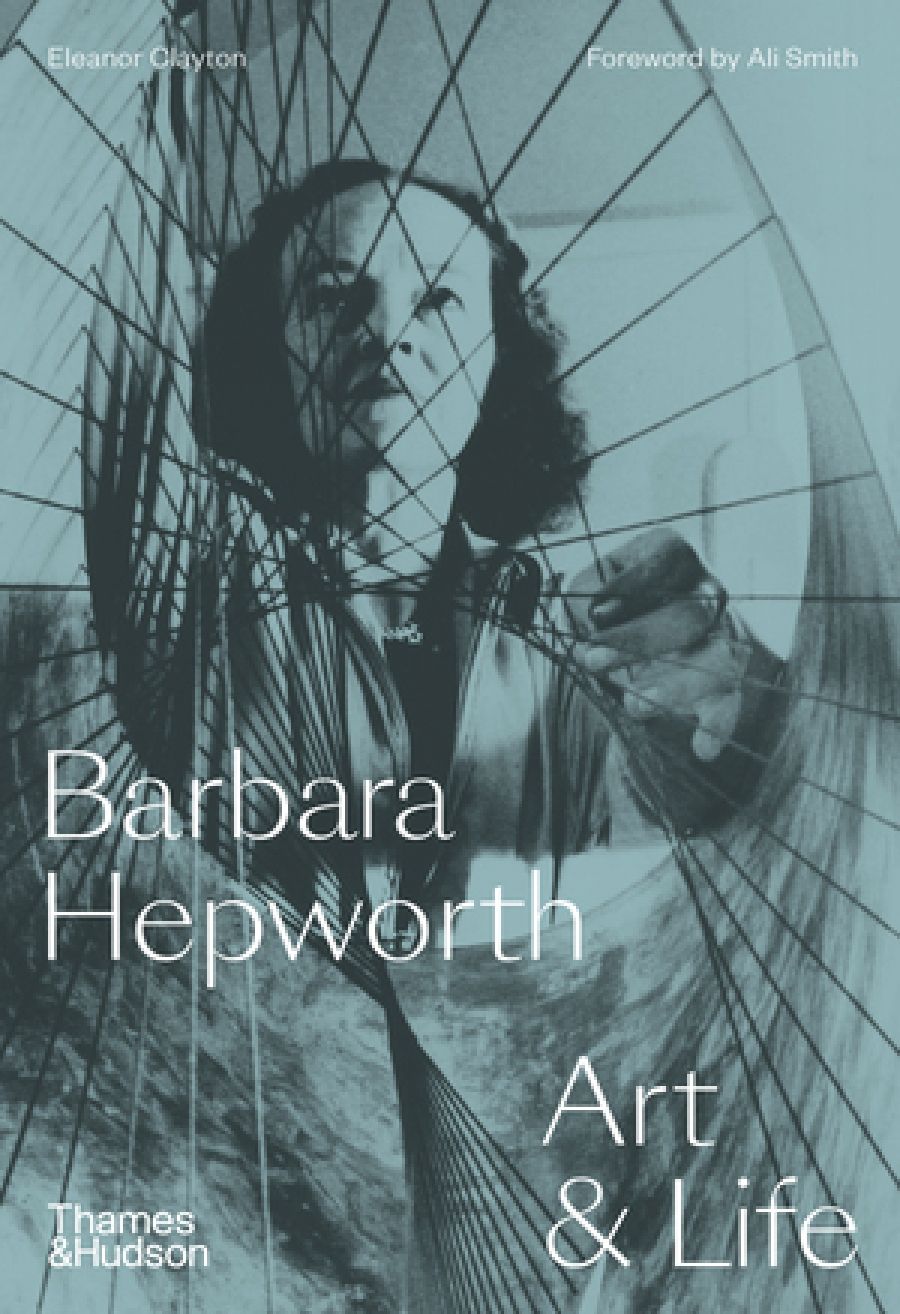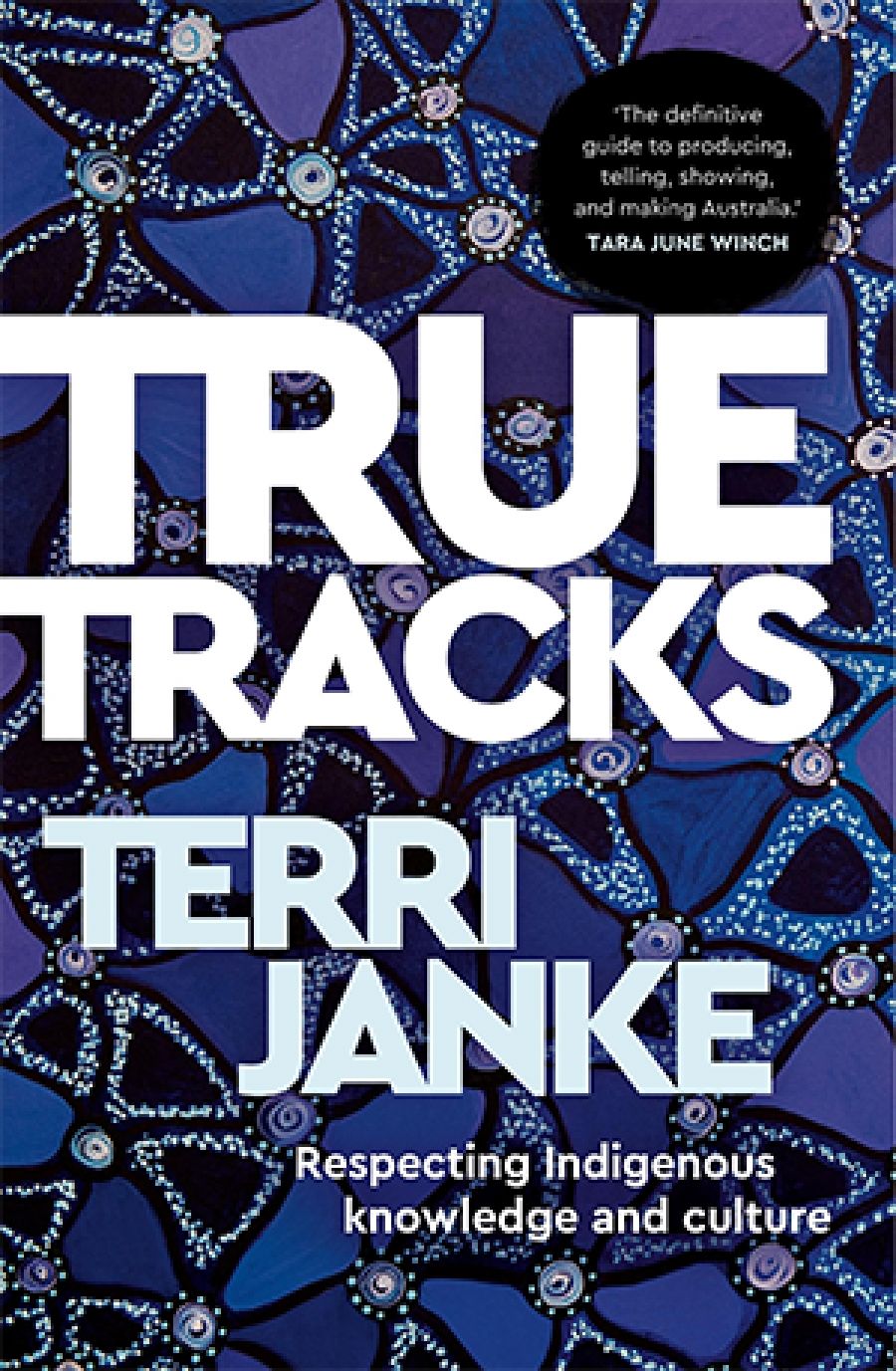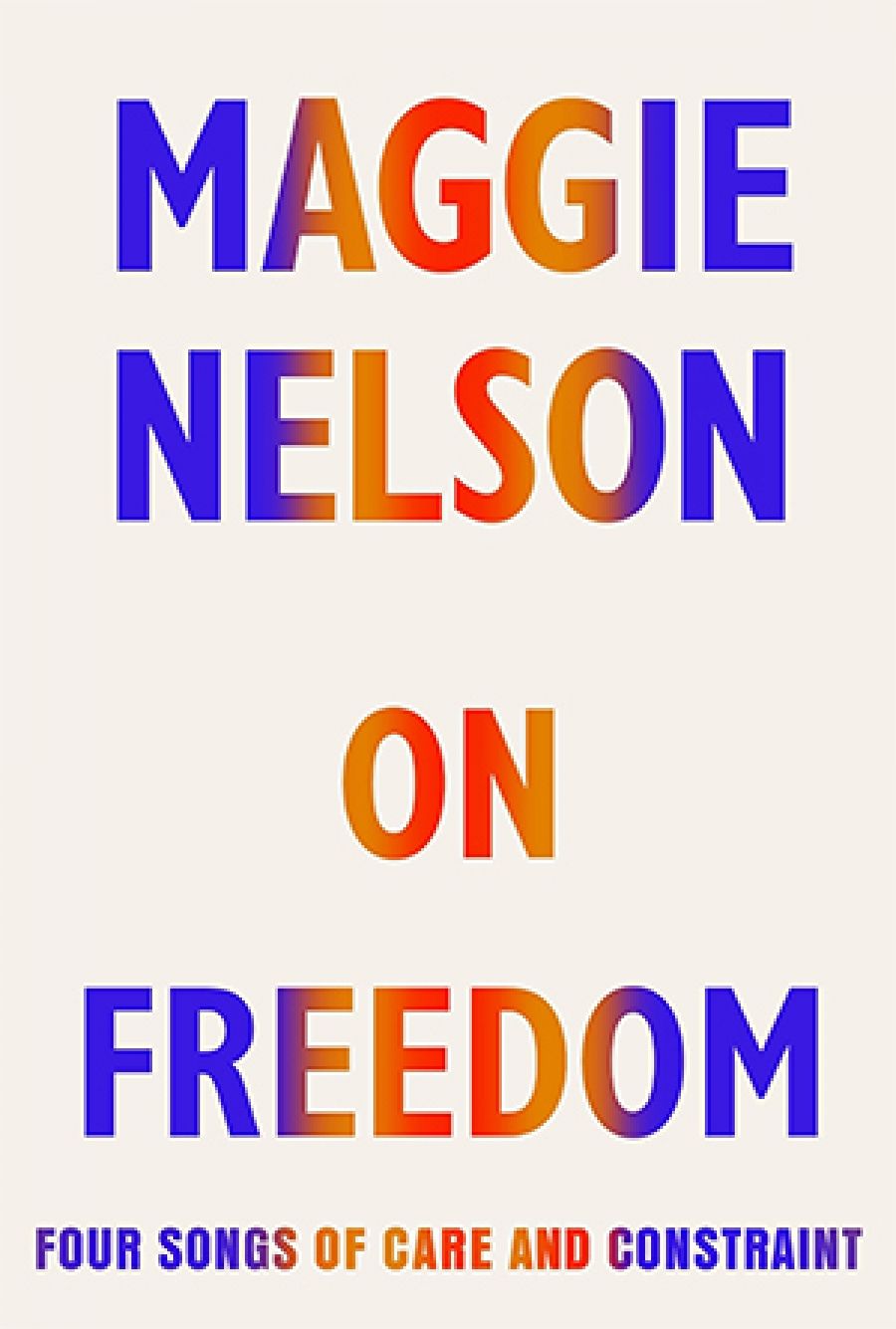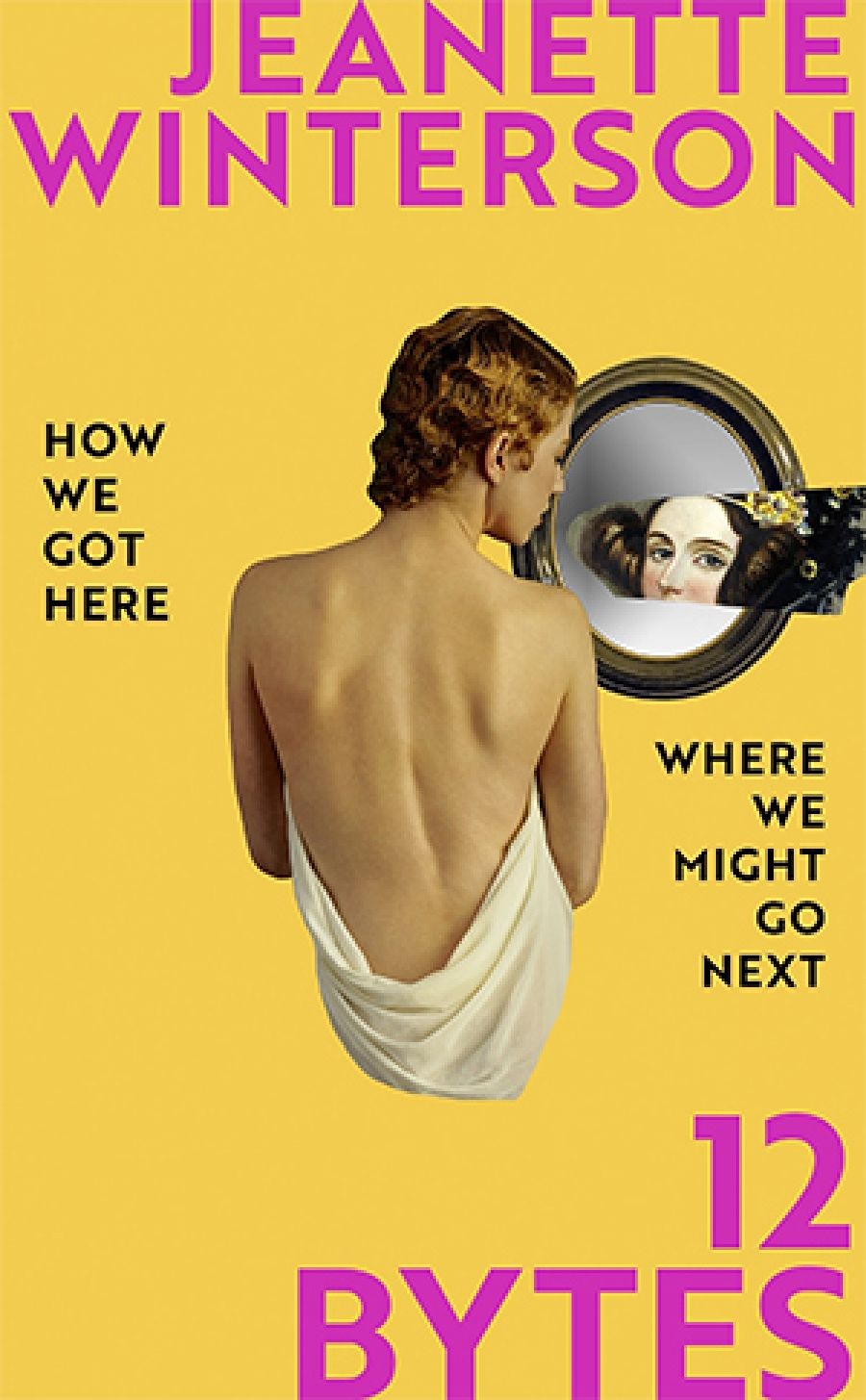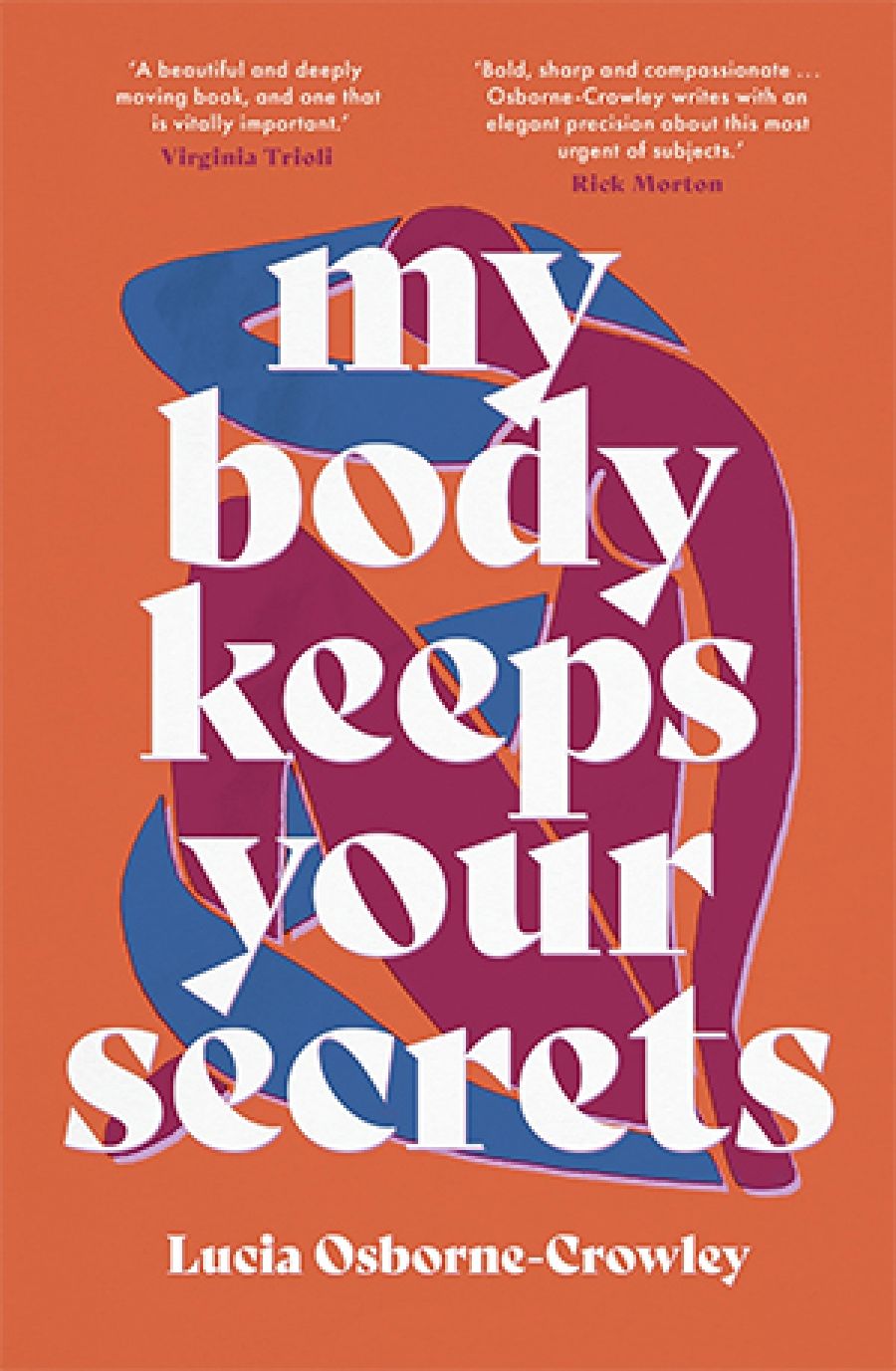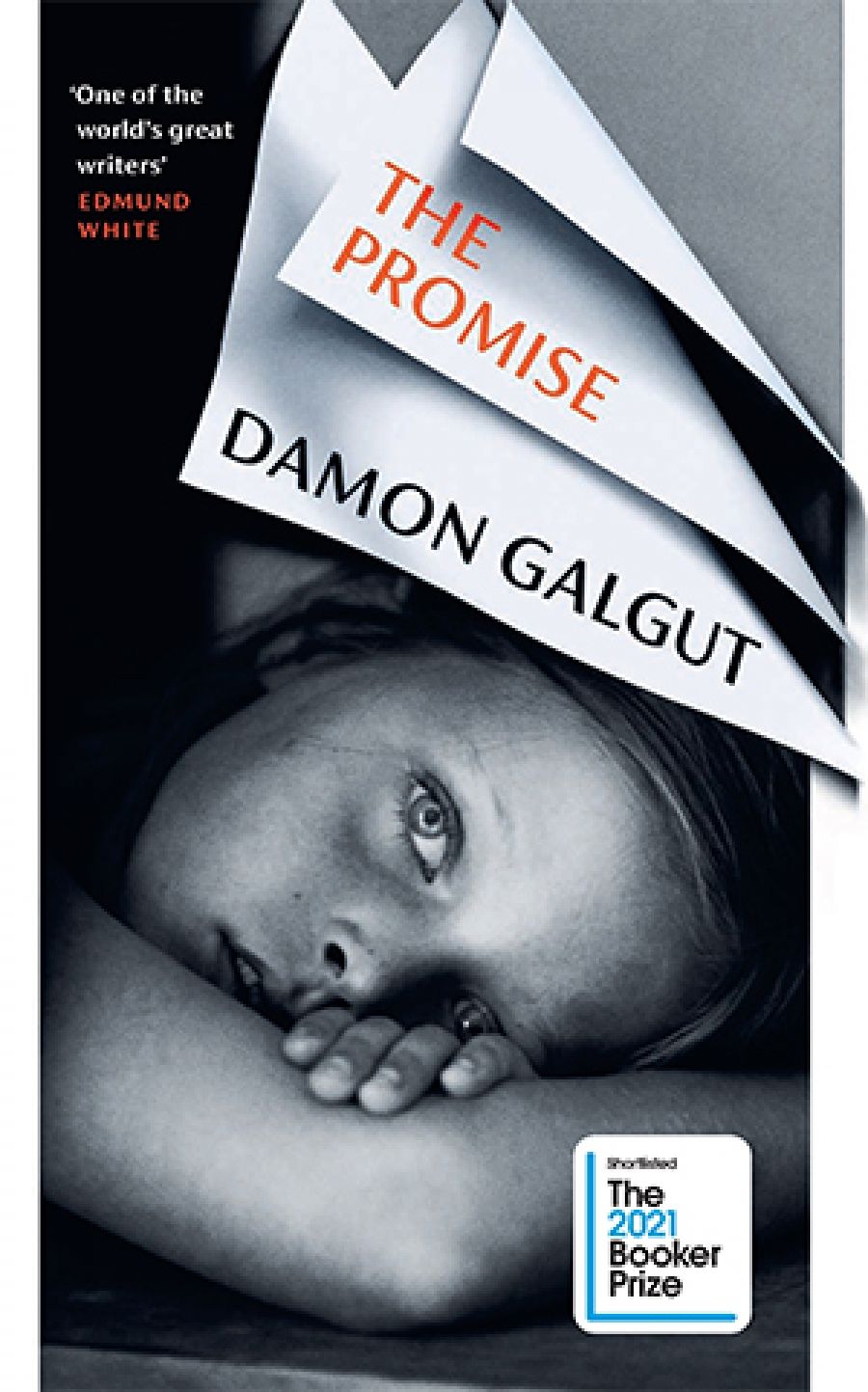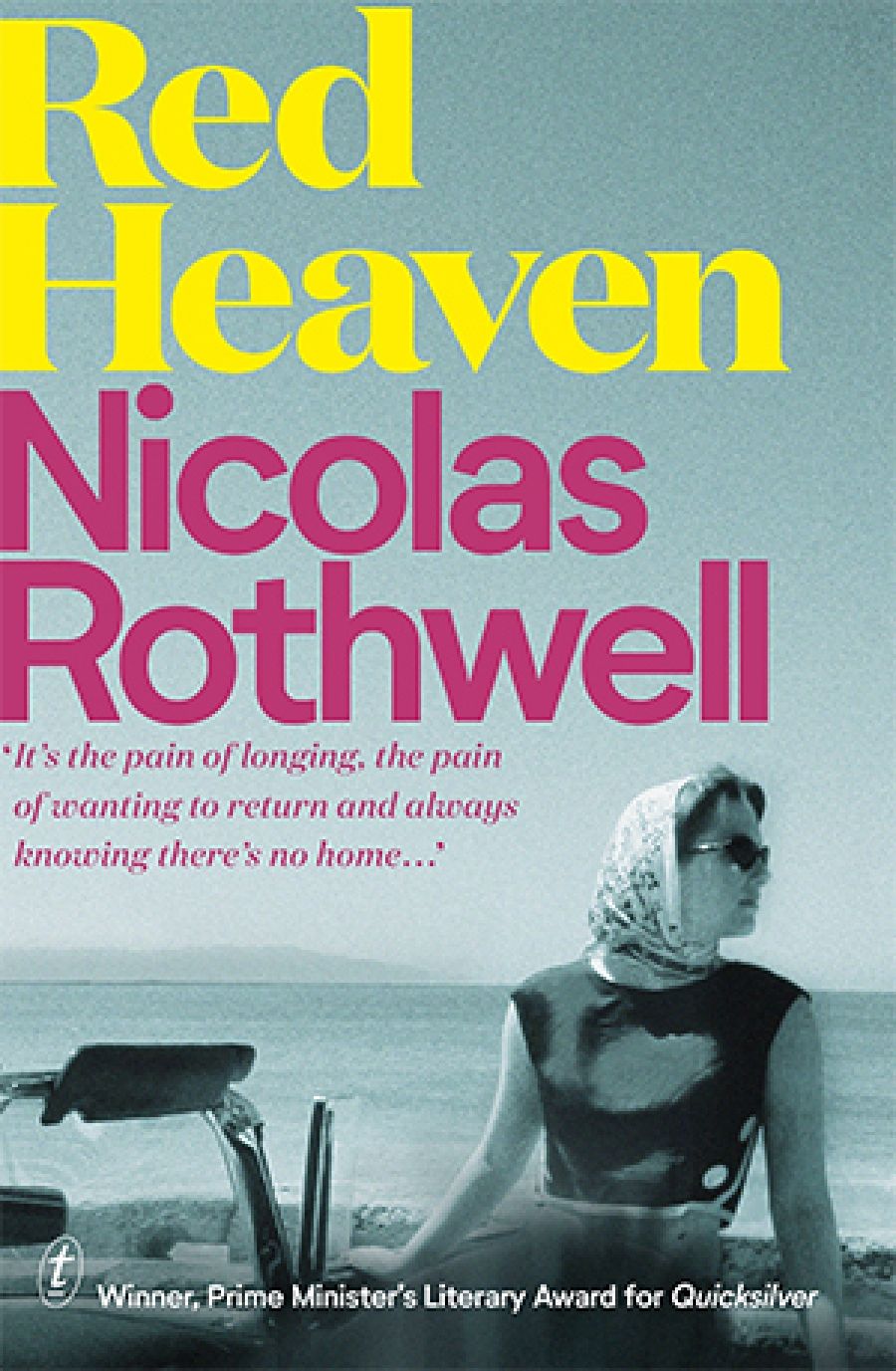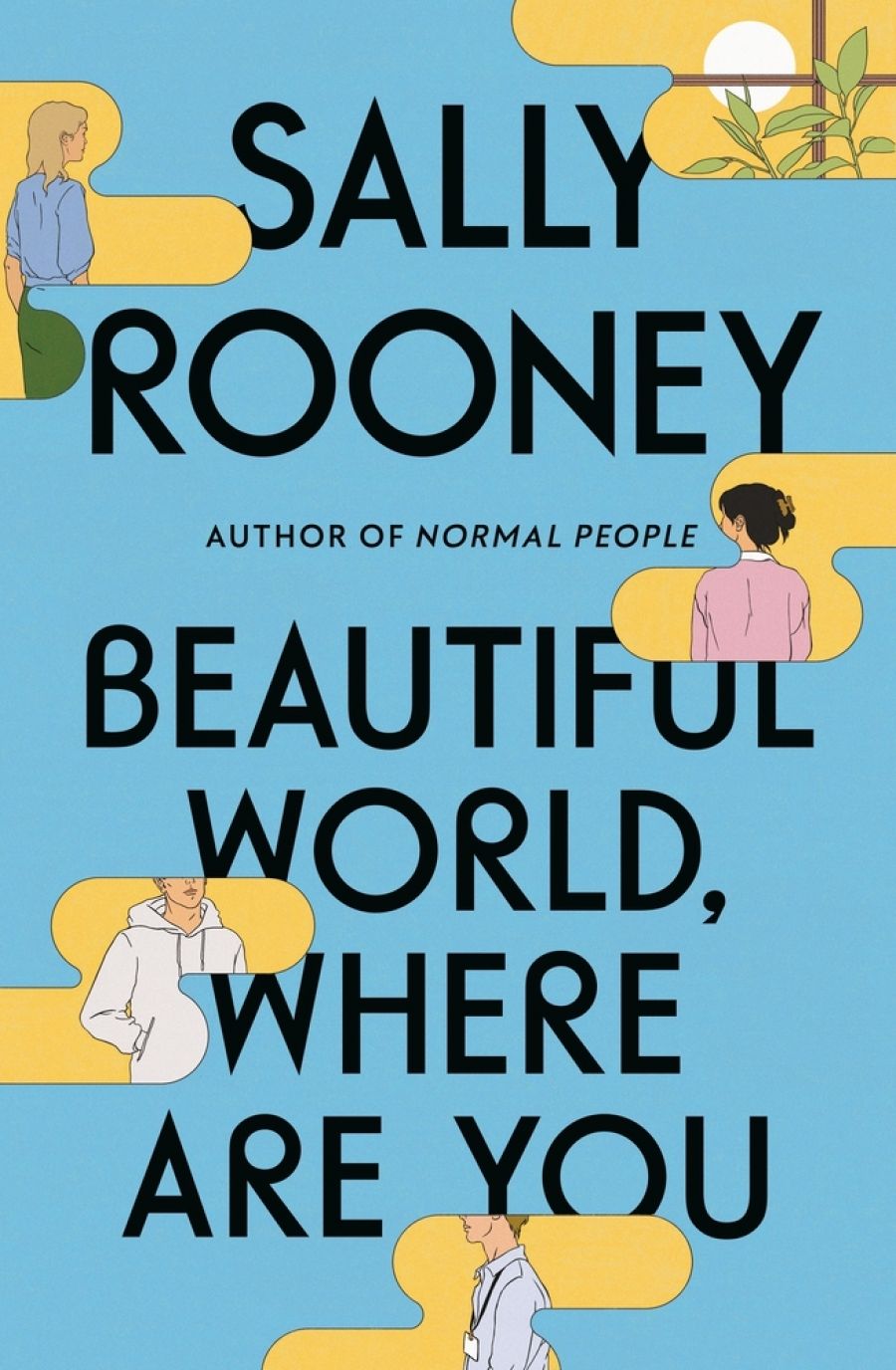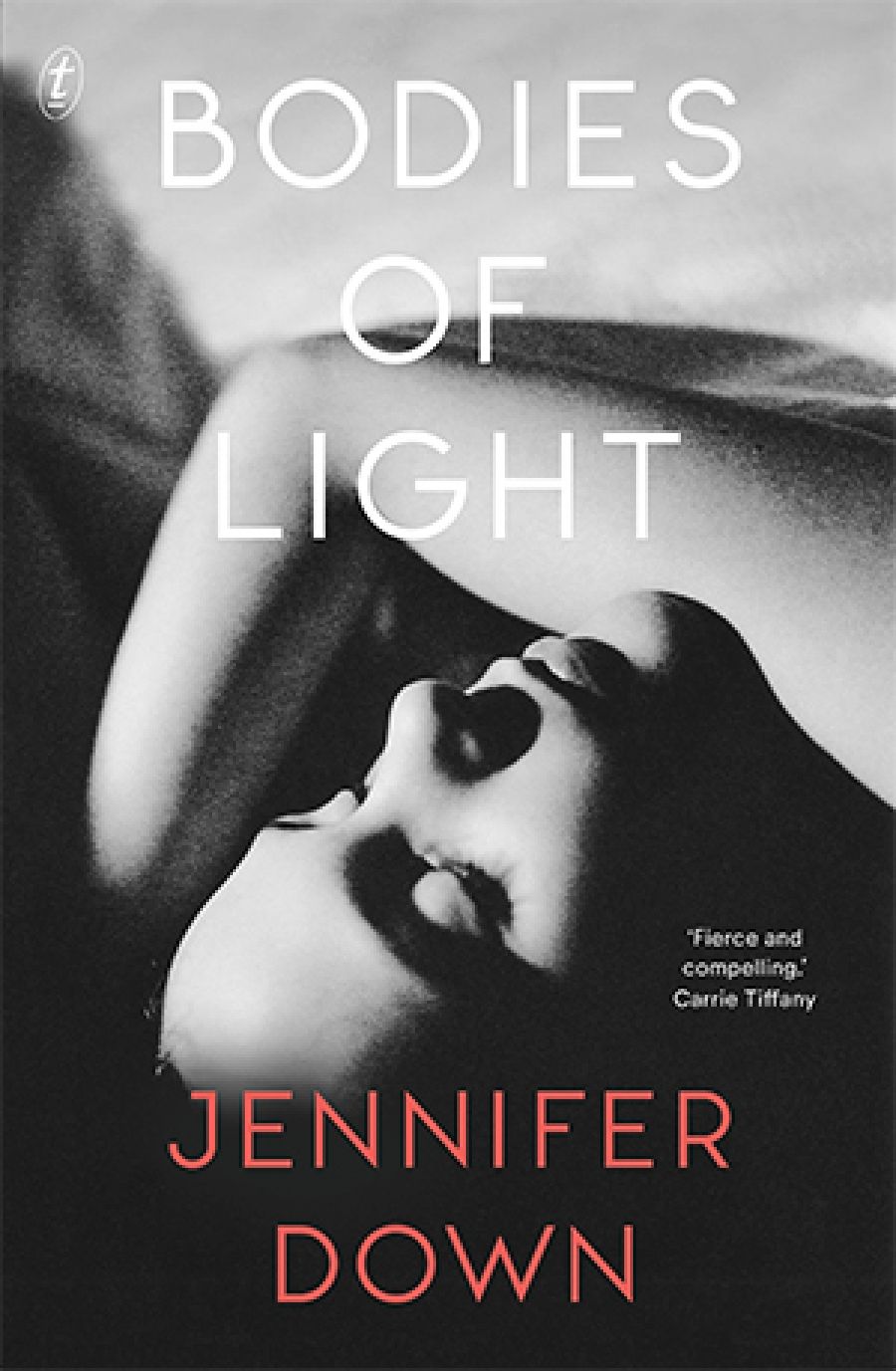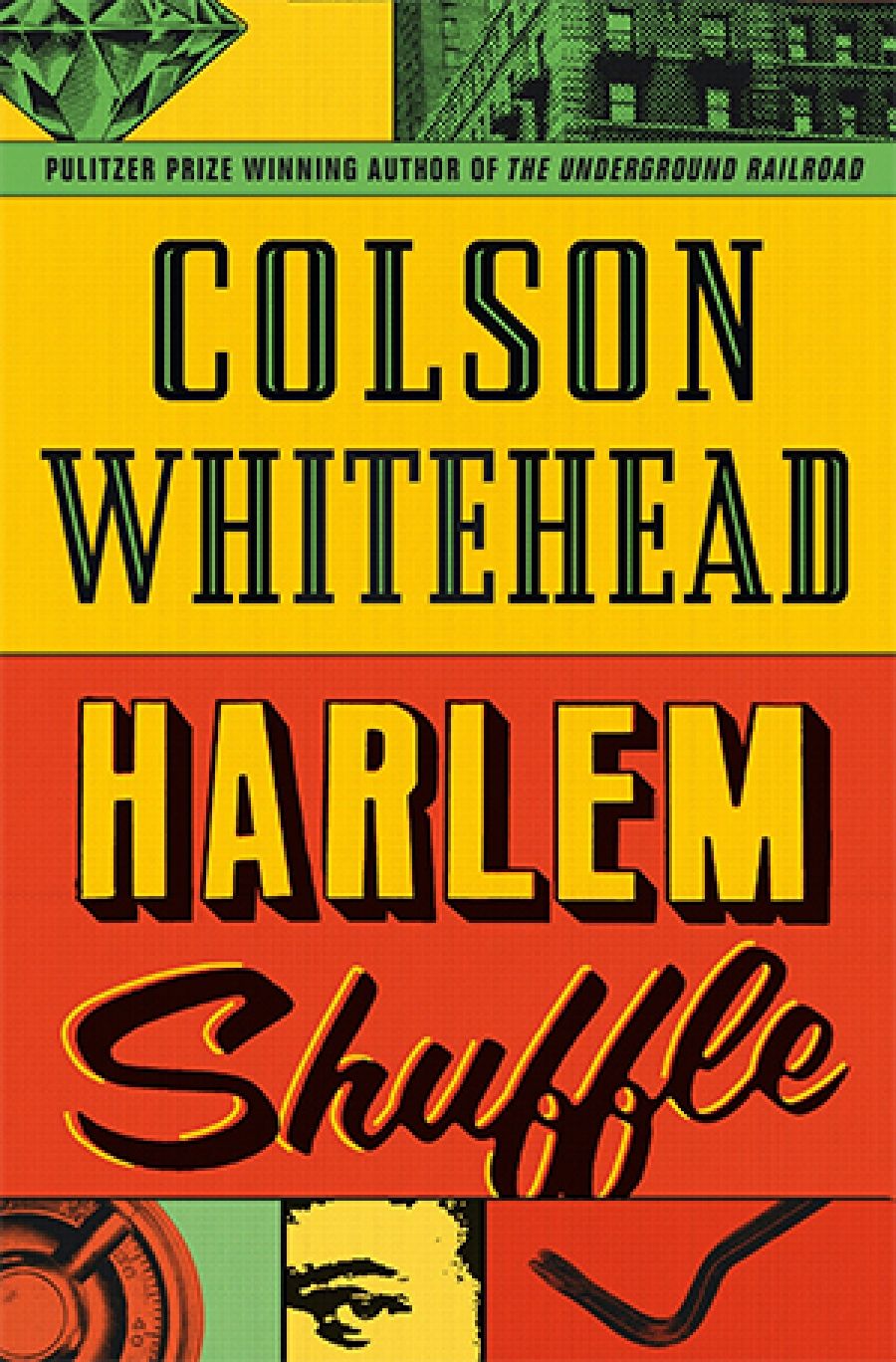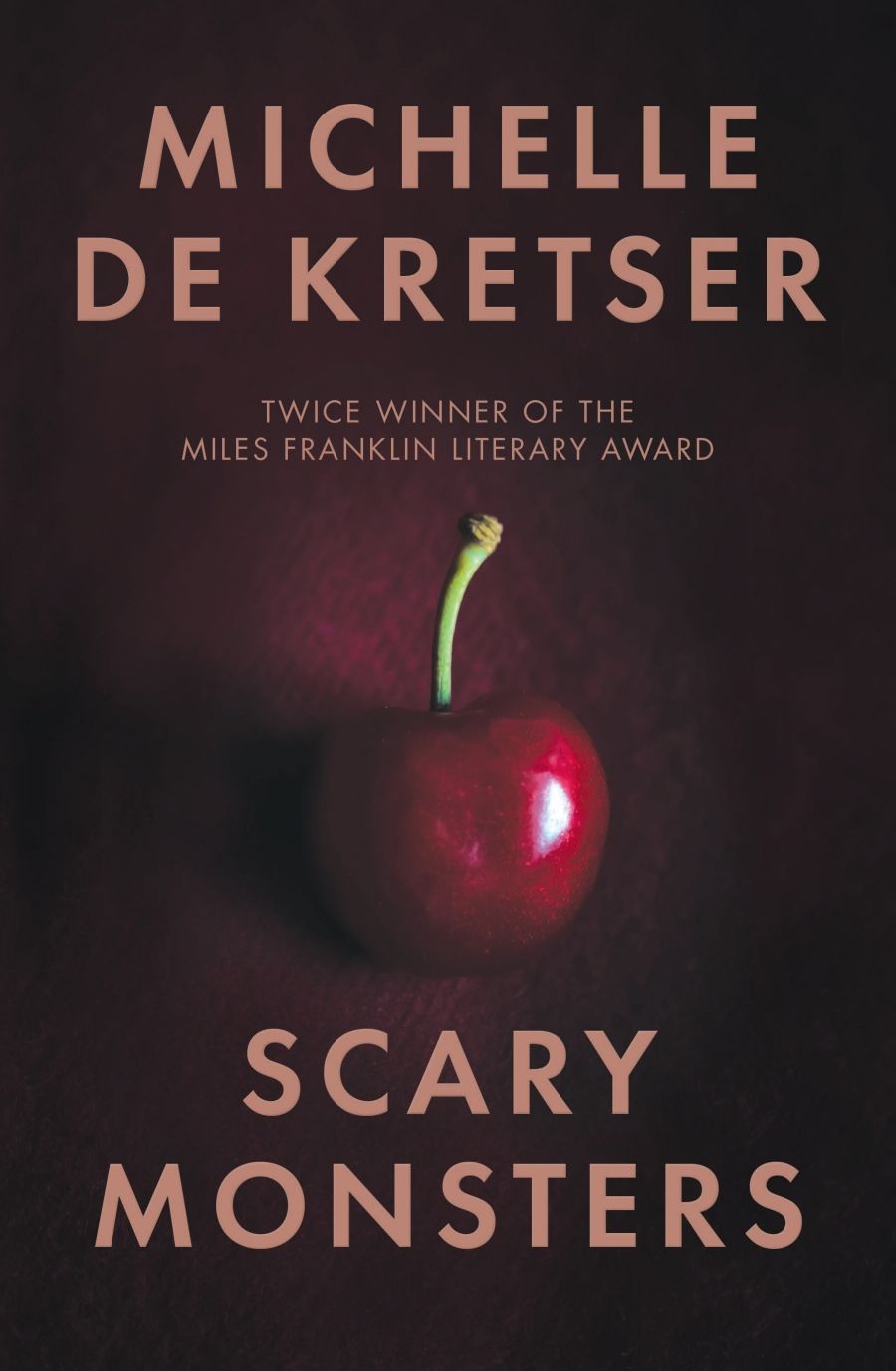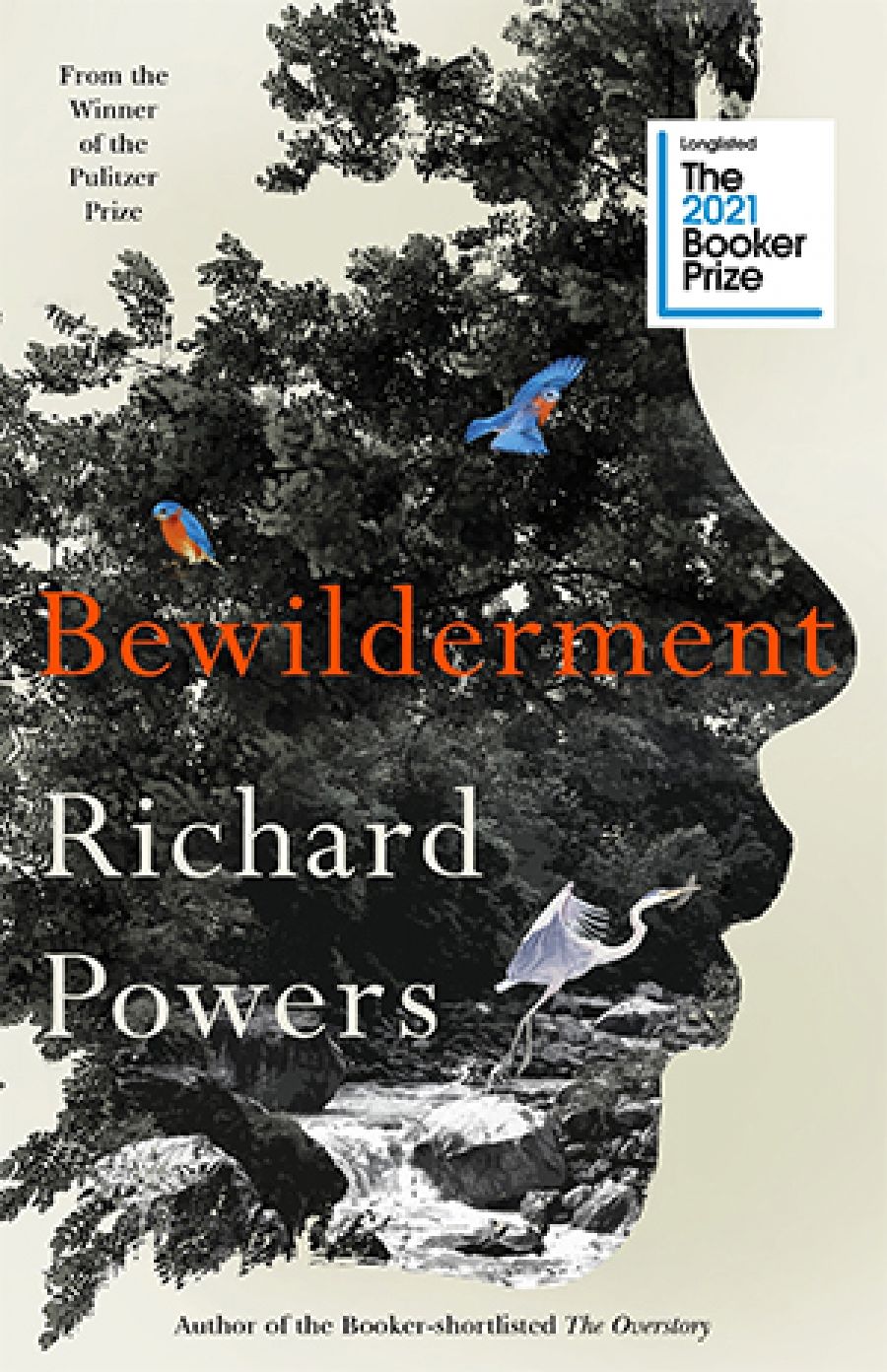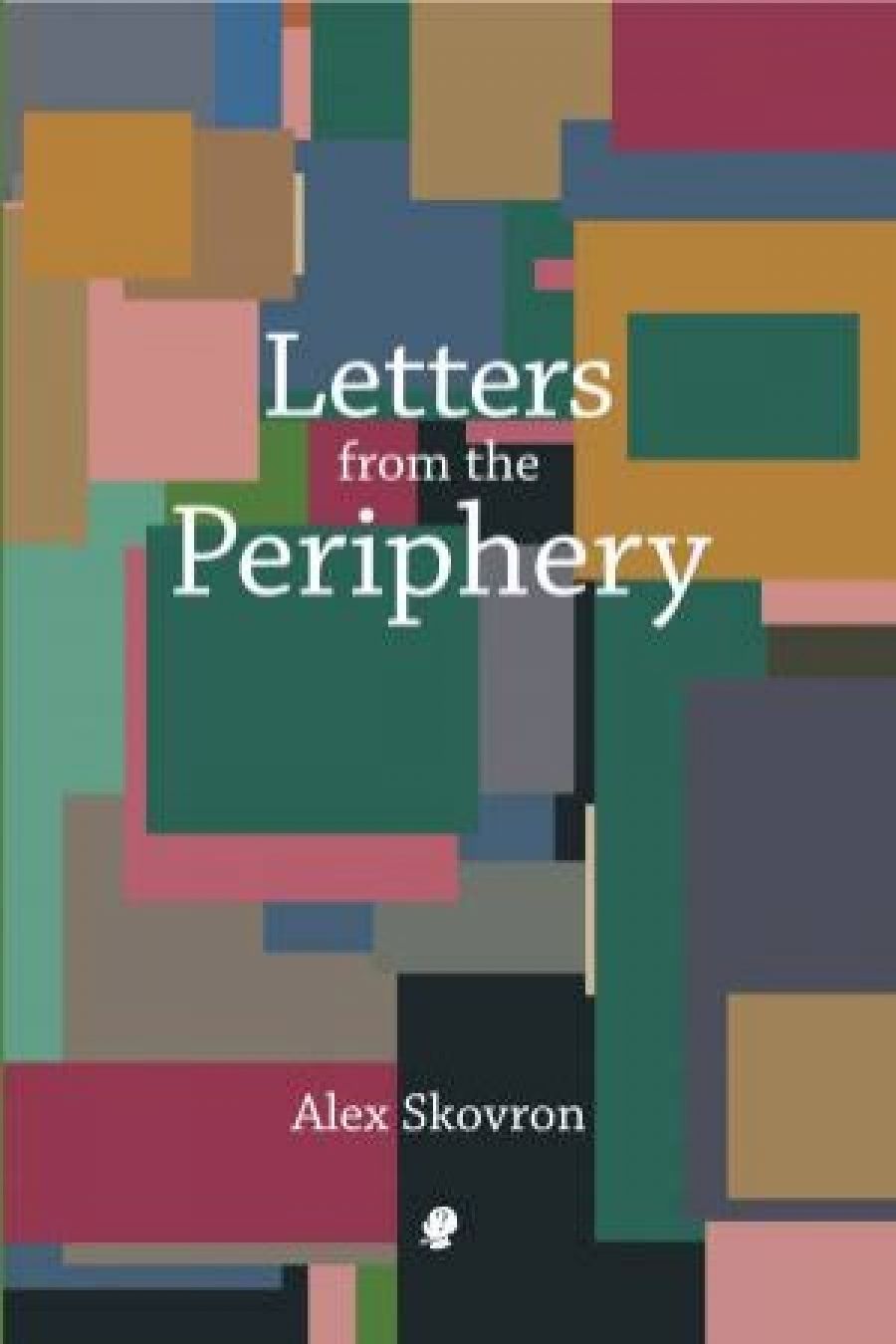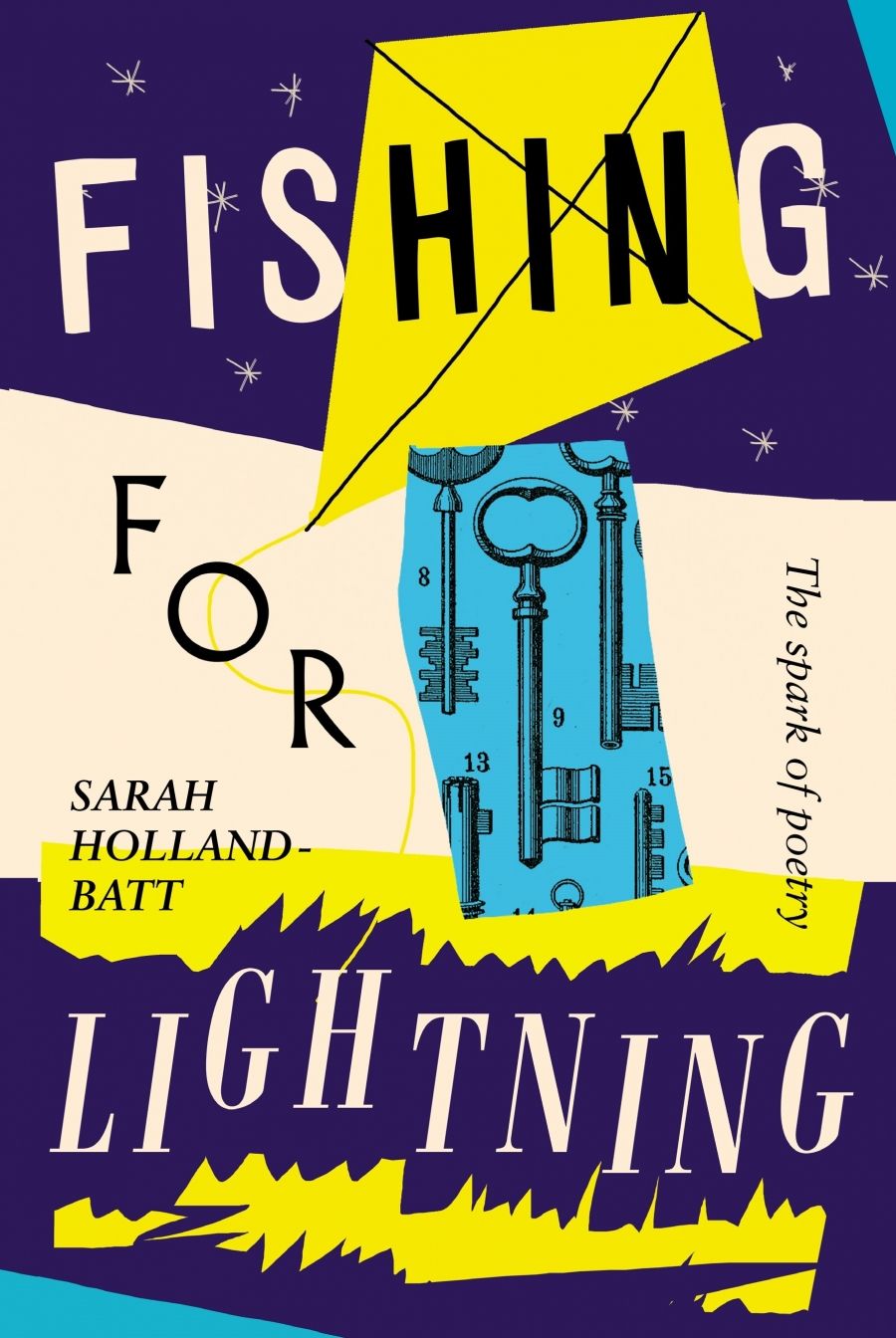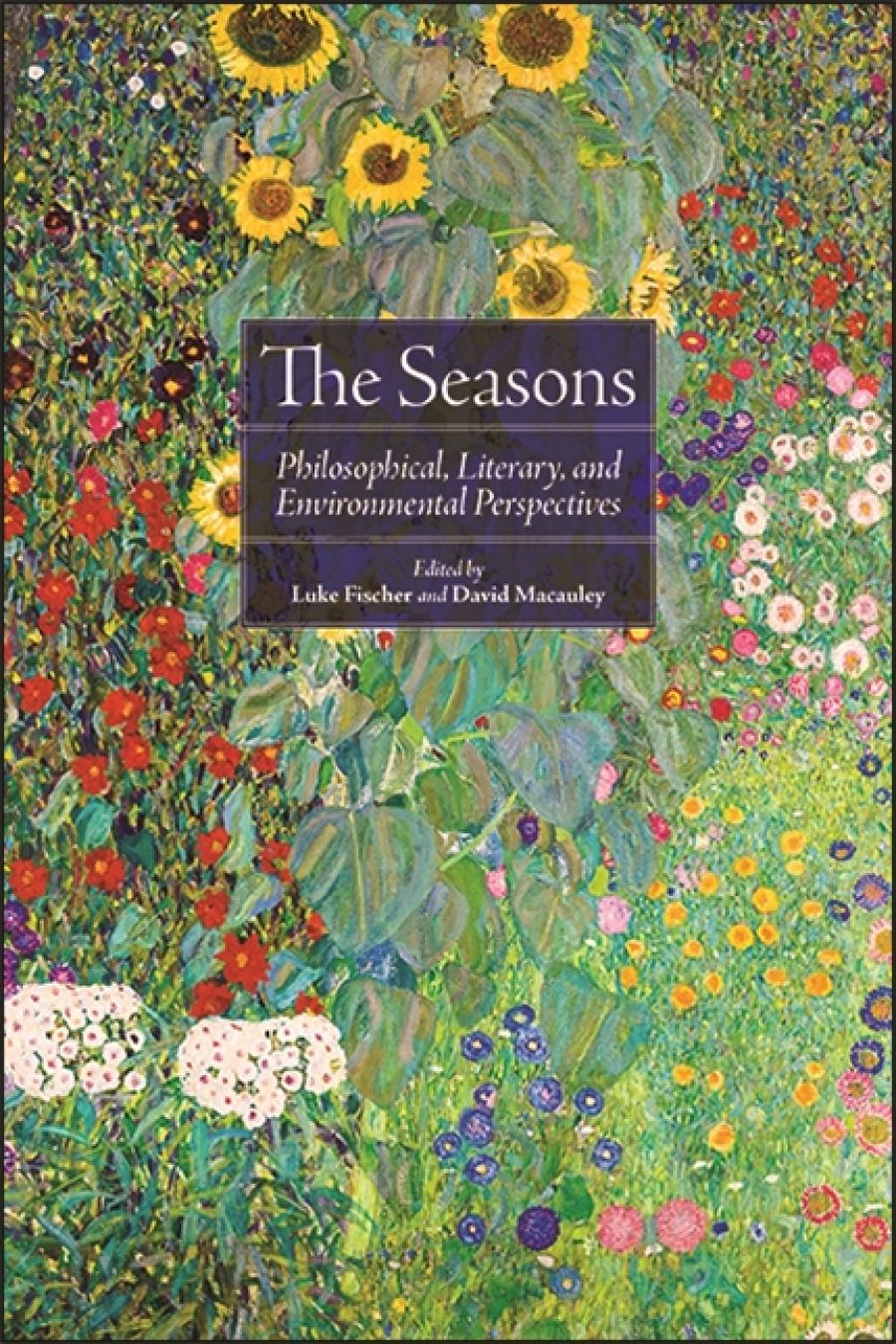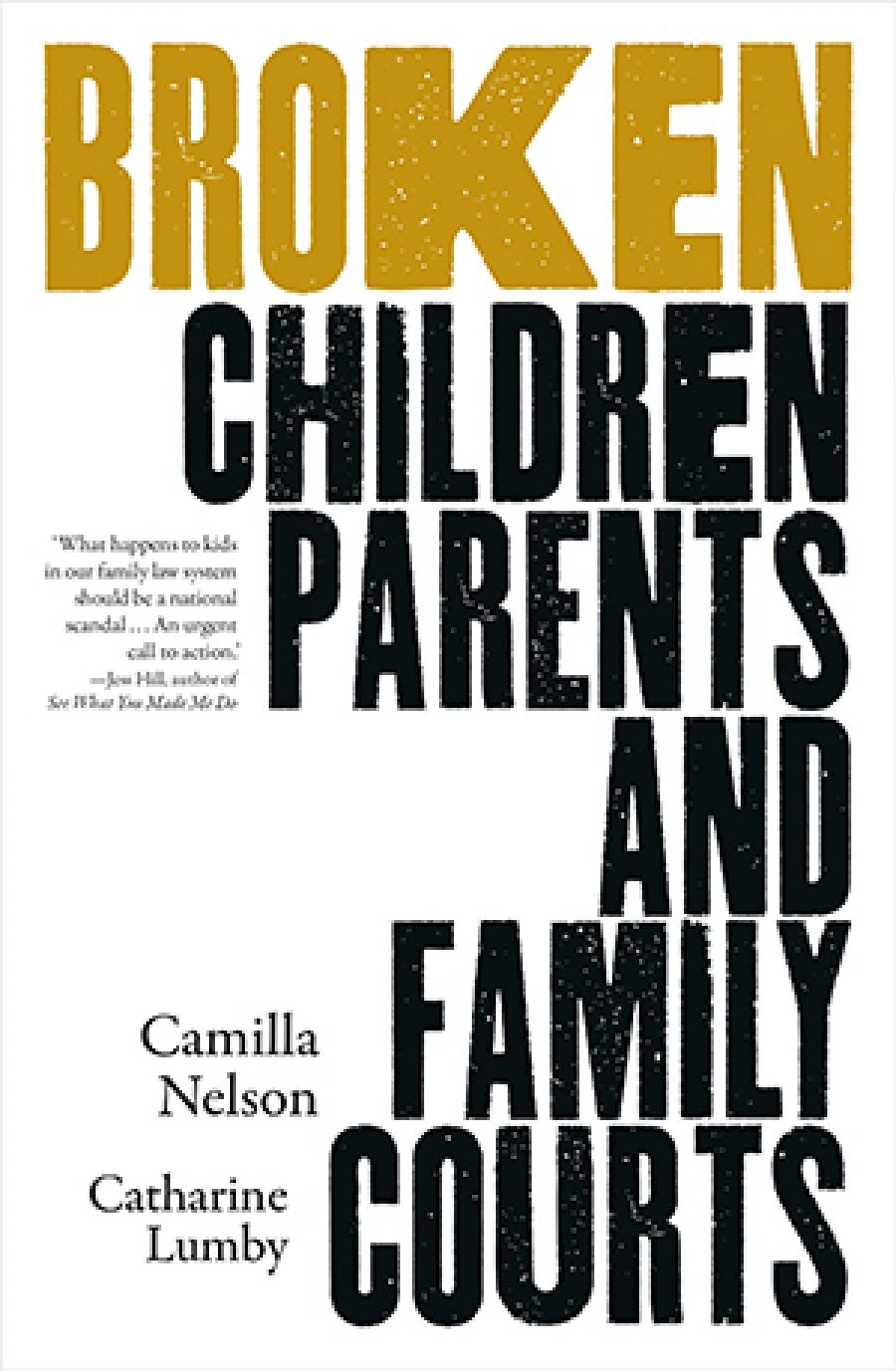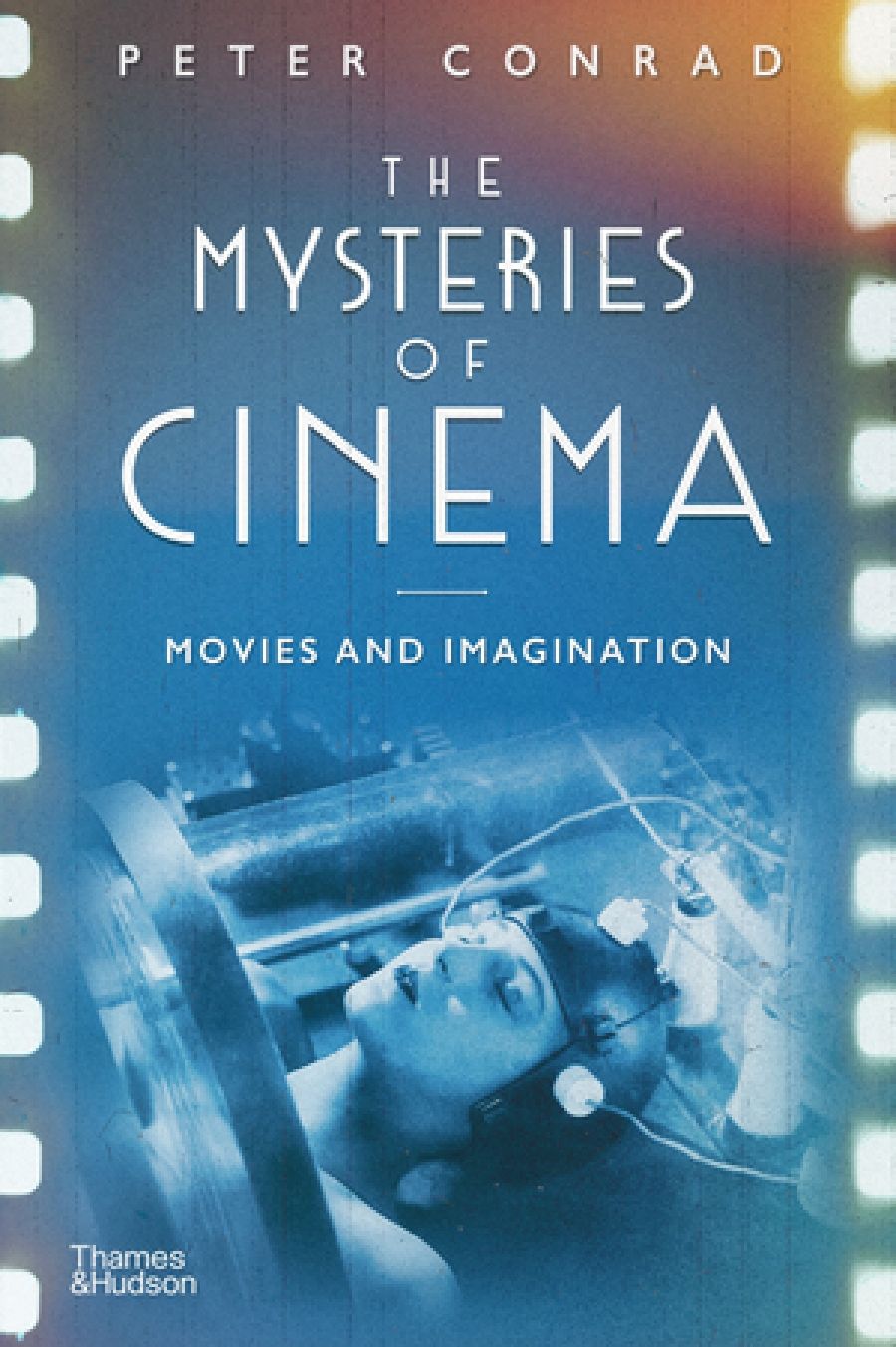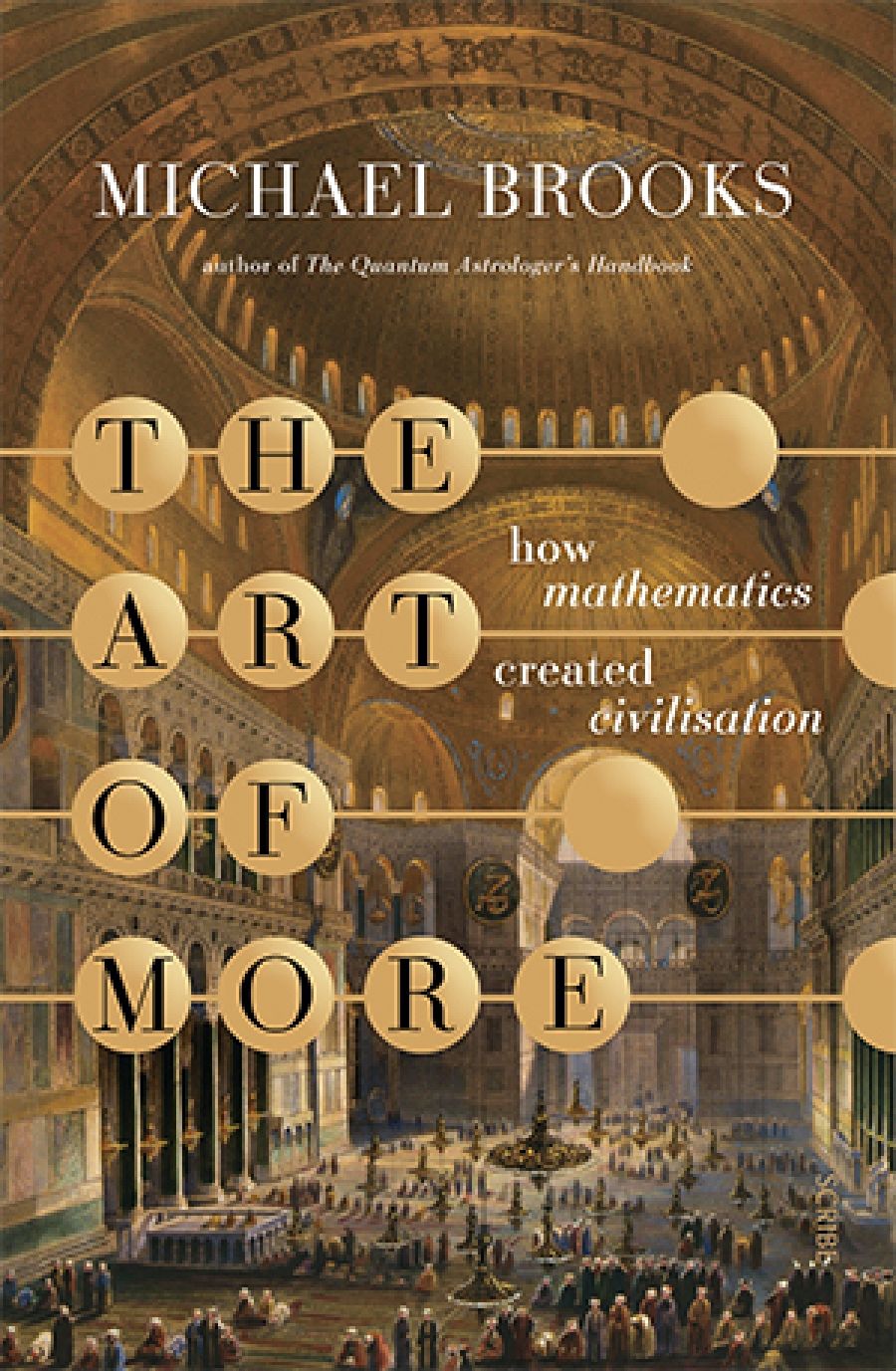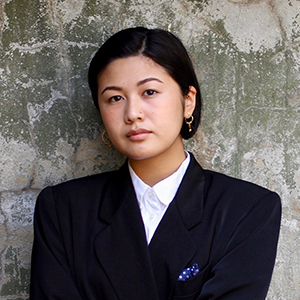To read Michelle de Kretser’s fiction is to sense important details swimming under the surface of our awareness, forming patterns that will come into view by the end of the story, or after contemplating it for a time, or while rereading. There is always enough to satisfy our immediate needs – rich aphorisms, sharp characterisation, satirical wickedness, the play of language, political and historical concerns, mysteries explored – but the presence of morphing repetitions and suggestive references leaves the pleasurable impression that you have only just started reading the novel even as you finish its closing sentence. The structural integrity of de Kretser’s fiction, its intelligence and purposeful virtuosity, combine to induce keen readerly attentiveness. Scary Monsters is no exception.
Lili and Lyle are the narrators of two distinct but connected stories of near-identical length that begin on opposite ends of Scary Monsters and finish at its centre. The stories can be read in either order, which will generate different but related readerly experiences. We bring the ghost of the first story we read into our understanding of the next, but we can choose which ghost to carry into which story.
Lili, an idealistic young Australian with Asian heritage, teaches high school students in the South of France in 1980–81 while awaiting acceptance into a postgraduate course in philosophy at Oxford. She wants to be like Simone de Beauvoir, but finds that she is more timid and constrained than her hero. Lyle is an Asian immigrant husband and father who works for an authoritarian government in a dystopian but not wholly improbable future Australia.
Lili experiences a post-university crisis. Deprived of the scaffolding of academic study and the purposefulness of intellectual ambition, she is disoriented and anxious: ‘My life was a bridge strung across a ravine,’ she says. ‘I was moving over it fast, and it was collapsing behind me like an old film.’ This mirrors her earlier, unsettling experience of moving to Australia: ‘When my family emigrated it felt as if we’d been stood on our heads. Events and their meanings came at us from new angles.’
Lyle is alienated from common human feelings – love and compassion are foreign to him – but he still yearns for approval and acceptance. The disquieting peculiarities of his personality might be symptomatic of the psychological demands of immigration, or of living in a police state in the midst of environmental collapse and rolling pandemics, or it might simply be innate.
Lili wants to be interesting, to be noticed and desired, while Lyle yearns for complete anonymity. The two narratives almost meet in the middle. Their final passages fold into each other in suggestive rather than literal or explicit ways, but the stories also serve as opposites, white against black and black against white, each one sharpening the effect of the other through contrast. Lyle’s story is a heightened satire; Lili’s is infused with horror-story tropes.
The title is drawn from David Bowie’s ‘Scary Monsters (and Super Creeps)’, and several of the men across the novel are registered as monsters or creeps, or potential ones. Lili fears all men because they might be Yorkshire Rippers in disguise, even when she is sexually attracted to them, and she fears a French state and society hostile to North African immigrants and other vulnerable outsiders. There are also elements of ‘creepiness’ in the way younger people dismiss, disregard, and exploit older people or ignore those who aren’t deemed interesting enough, and in the broad hostility to Muslim people and immigrants in both narratives.
Lyle and his wife, Chanel, are indifferent to vulnerable outsiders, favouring a pragmatism that relieves them of any impulse to show warmth or generosity. The poor, sick, elderly or otherwise stigmatised are ‘better off’ dead in their eyes, because ‘what kind of life was that?’ They are versions of the monsters that Lili fears, but Lyle is running from his own fearsome predator: ‘I can’t stop thinking about it now, the way old, forgotten things can suddenly appear … it’s frightening. The past should remain in the past.’ He and Chanel make every effort to leave their old lives behind and thereby become ‘authentic Australians’, but ‘the past crouches and waits, and springs from the long grass’. It is h(a)unting them.
In both parts of the novel, individuals and institutions work to supress an awareness of uncomfortable or inconvenient truths, or to limit what counts as history. For all her unpredictable inventiveness, de Kretser tends to restage versions of this confrontation in most of her novels. When people seek to repress or conceal something in her fiction, it invariably returns in distorted forms. Ghosts feature regularly, partly because they break through perceptual and psychological barriers that separate past, present, and future. The past must be accommodated, even when it assumes scary or troubling forms. In Scary Monsters, Lyle and Chanel embody the failure to accommodate those ghosts. For Lyle, ‘The past should weigh less than a photograph – we abandoned or deleted most of those as well.’ It is implied that this renunciation, which they regard as an exemplary Australian trait, is a symptom or cause of their shallow selfishness.
L’Étranger (1942) casts a noticeable shadow over Scary Monsters. Lili and Lyle share important traits with Meursault, Albert Camus’s protagonist: Lili’s perceptions are often distorted under the influence of alcohol, sickness, or fear, just as Meursault’s perceptions are warped by the fierceness of the sun; and Lyle’s coldness toward his mother accords with Meursault’s reaction to his own mother’s death. Lili wants to scream out that the centrality of L’Étranger to French culture is ‘not normal’, given the events of the Algerian war and its aftermath, yet its influence permeates the novel she appears in. De Kretser wields this kind of irony effortlessly.
Lili is a fallible reader of her world. When she realises that she has made several wrong assumptions about a seemingly close friend – that her beliefs are not aligned with reality – it provokes a rupture in their relationship. She feels as though her trust has been breached. If Lili were to read Scary Monsters, she might find it similarly alienating, because de Kretser sets up numerous booby traps across both halves, subtly inviting us to make wrong assumptions before jolting us out of our carelessness. This reaffirms a foundational novelistic convention: that the smallest unknown detail can radically transform a story. As readers, we are prompted to be mindful of the gaps in our knowledge and wary of the blunders that can result from thoughtless expectations.
One of the novel’s epigraphs is from Nietzsche: ‘The state is the coldest of all cold monsters.’ Lili feels the cold keenly, as does Lyle’s mother, Ivy (names and flowers carry enigmatic significance), and both Ivy and Lili struggle to find warmth and hospitality on foreign soil, even among their friends and family. Throughout Scary Monsters, the refusal or failure to join the past with the present, or one part of a story with another, is consonant with a failure to develop warm and meaningful relationships with marginalised or disposable people. For readers of this novel, the implicit task is to make a seemingly fractured story whole, to locate or construct points of connection between parallel worlds, to warm the pages with our close and imaginative engagement. There is an implied moral dimension to this challenge, but the ultimate result is our readerly delight.
